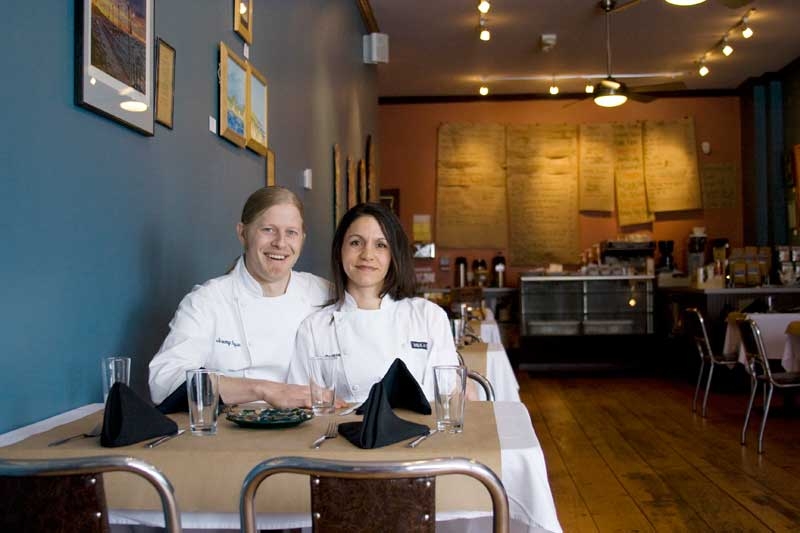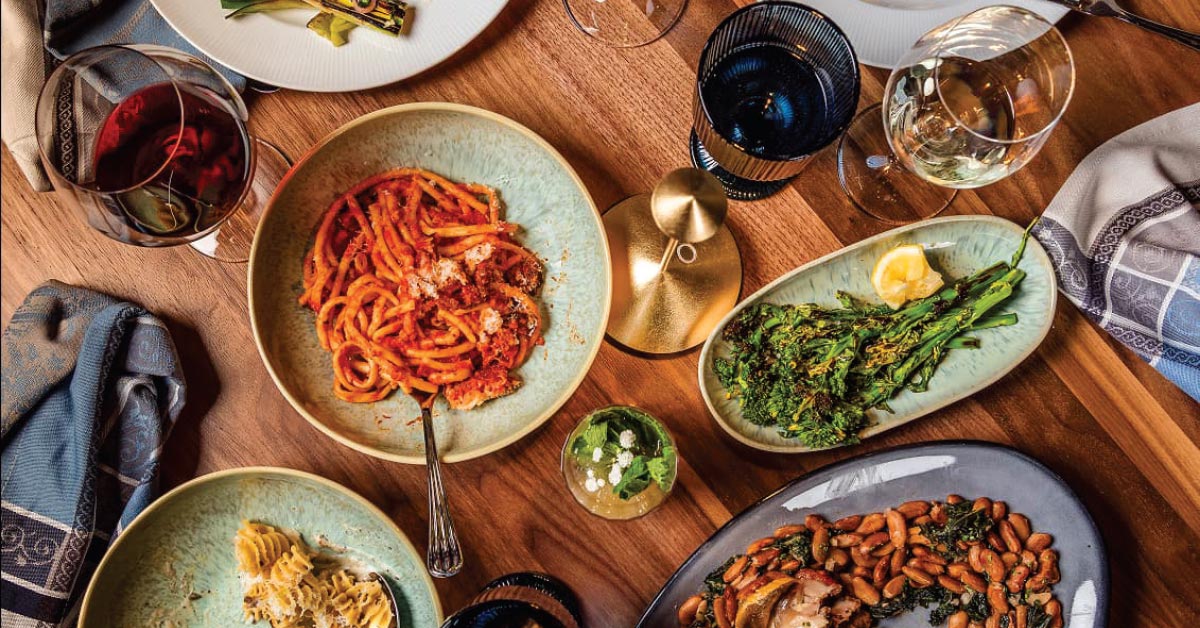To Michigan’s economy, restaurants are kind of a big deal.
The industry currently employs 10 percent of Michigan’s total workforce, registering $13.1 billion in annual sales. The National Restaurant Association projects a 5.8 percent increase in employment over the course of 2014, which means the creation of 23,000 jobs in the state.
However, despite collectively boasting some pretty impressive numbers, running a food joint isn’t all dollar signs and high fives. The whole “nine out of 10 restaurants close within the first year” thing may be a weirdly specific myth, but a 2005 study by an Ohio State University professor reported that actual numbers were closer to three in five restaurants going out of business after the first three years.
So, how do those lucky two remaining establishments survive the three-year death sentence and remain profitable in such an unpredictable market?
Take Cherie Inn, for example, which has proven healthy longevity is possible since it opened in 1924. Grand Rapids’ oldest restaurant still enjoys its fair share of foot traffic in the East Hills neighborhood where it was established 90 years ago.
“Every year has been better than the last,” said Michael Kulczyk, who has been the owner and proprietor of Cherie Inn for the past 17 years. “It went from the whole street being for lease, for lease, for lease, to where now, you can’t find property available.”
As the East Hills neighborhood developed, so did the business district alongside it, and today there are nearly a dozen restaurants within a four-block radius of Cherie Inn. Kulczyk said the restaurant’s all-breakfast menu, in part, helps Cherie Inn to stand out among competitors.
Plus, unlike many other dining-related recreation that lost profits during the economic recession, Kulczyk said breakfast is relatively recession proof.
“The nice thing about breakfast is even when the economy is tough, people still want to treat themselves to a meal out. They might cut out a high-end dinner, but they’ll still go out to breakfast.”
For Cherie Inn, success comes with its character. Of course, there's the all-breakfast menu, but also the original 1940s Stickely furniture and the married couple who had their first date there 60 years ago and have come back regularly ever since.
“I think having a restaurant with ambiance is so hard to find nowadays. … I think people like the feeling of being in someone else’s dining room,” Kulczyk said.
DISTINGUISHED DISHES
That fairytale feeling of consistent growth isn’t true across the board in Grand Rapids, however. To San Chez Tapas Bistro owner Dan Gendler, not all of his 22 years of operation have been so kind.
Gendler first opened San Chez with former business partner George Sanchez in 1992, when the location on 38 W. Fulton was an old warehouse, surrounded by homeless shelters and abandoned buildings. Though San Chez pulled off 15 to 20 percent growth in its first four years thanks by and large to unique cuisine, the construction of Van Andel Arena in 1996 brought a whole new wave of competition to downtown Grand Rapids, and Gendler watched sales drop 40 percent over a three-month period.
“We went from being highly successful to wondering how we were going to make ends meet; from loving the restaurant business to really not liking it at all,” he said.
But Gendler described the majority of his competitors as “meat and potatoes” restaurants and made the decision to cut dinner entrees in favor of an all-Spanish, entirely tapas menu for San Chez in an effort to brand the restaurant as something unique.
“I didn’t know it in 1996, but nine months later we were at 15 to 20 percent growth,” he said. “When we started being profitable in 1998, that’s when I knew we made the right decision.”
LOCALS GO LOCAL
Though restaurants supported by hyper-local sourcing within the farm-to-table framework have been around for more than a decade in some bigger U.S. cities, the movement has finally started gaining popularity in Michigan cities.
In Grand Rapids, public preference began the shift toward hyper-local early on. But the concept has taken a little longer to catch on with restaurant-goers in Muskegon and Kalamazoo, where places like Mia & Grace and Food Dance initially struggled to get their businesses off the ground.
“Truthfully, Kalamazoo’s founding focus is education, the arts and philanthropy and that’s great,” said Julie Stanley, owner of Food Dance, an expansive locally sourced restaurant and food market in Kalamazoo. “It’s just a harder food town because they’ve never really promoted it very well.”
At Food Dance, Stanley lays it all out in front of customers, with everything made from scratch in the 11,000-square-foot building that houses its own bakery, bar, market and curing/hanging rooms for the meat they butcher on site. Though the restaurant didn’t move into the larger space until 2007, Stanley has always operated Food Dance with the end goal of having a comprehensive market like the one now, which was just renovated in the fall to include bigger meat-and-cheese selections and a grab-and-go station.
“I’ve been buying from local sources, personally, for 35 years,” said Stanley, who owned another business prior to opening Food Dance in 1994. “I can’t imagine it being any other way,”
With the National Restaurant Association ranking locally grown produce, environmental sustainability and hyper-local sourcing among the top 10 culinary trends for 2014, there is empirical evidence that people are starting to take more of an interest in where their food comes from.
“We’re firm believers in that as close as you can get to your restaurant, it’s going to be a better product,” said Jeremy Paquin, who owns and operates Muskegon’s Mia & Grace with his wife, Jamie. “It was challenging at first. It was different because it was a different concept.”
Now in its seventh year of operations, Mia & Grace still lacks any substantial marketing budget and has relied largely on word-of-mouth for publicity. And they may not be public figures, but through their restaurant, the Paquins have been able to be active members of the public and help grow their restaurant into the surrounding community.
“Muskegon always gives back,” Jeremy said. “Actually, West Michigan as a whole always gives back … (At Mia & Grace) we do a ton of charity events and we can’t always give a ton of money, but what we can do is offer our services and help with what we can. That’s part of being a chef.”
The two chefs have partnered with the Healthy Muskegon initiative to prepare healthy school lunches for the Reeths-Puffer and Montague school districts twice a week, and have also done separate training sessions in the Whitehall School District to teach kitchen staff how to prepare food with fresh versus processed ingredients.
These efforts have allowed Mia & Grace to support its community and in turn, has garnered community support for Mia & Grace. In a sense, they’ve invested in each other, and that’s what the farm-to-table movement is all about.
CONSISTENCY IS KEY
It was 1979 when Margaret Balmer opened a small, blue-collar diner in Douglas.
Now equipped with a full bar, patio and comprehensive menu, nearly everything at Everyday People Café looks different except the food.
Margaret’s son, Matt Balmer, now owns the restaurant and said though he is always looking for new and creative ways to serve food, the process is the same – made-from-scratch dishes with locally sourced products.
“Everybody wants the new hot thing and I didn’t want that,” Balmer said. “I think a lot of places get caught up in trying to be everything to everyone, and I think when you do that, you’re missing out on who you really are.”
Balmer said the key to staying in the business over a long period of time is setting the bar high for service, food, atmosphere and pricing, and keeping it there.
“There are four things you need to do in this business and whoever does them the best and the most consistently is generally the one who is the busiest,” he said.
Though each of these five West Michigan restaurants have come into their own through a unique set of circumstances and ambition, consistency is the strongest common thread. Whether the restaurant offers your favorite breakfast dish, the only tapas in town, hands-on preparation by the owners or food made in front of your eyes, you know what you’re getting when you go there.
Successful restaurants combine their mission with method, and that makes all the difference.





